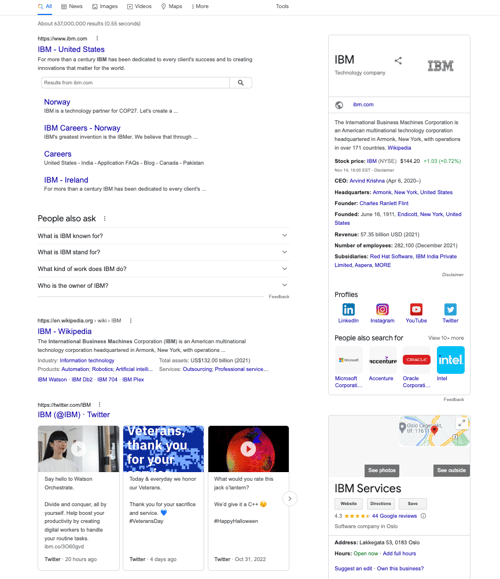- SERVICES
- HIGHER EDUCATION MARKETING
- ENGAGEMENT & ENROLLMENT MANAGEMENT
- STUDENT RECRUITMENT AGENCIES
- PROFESSIONAL EDUCATION & TRAINING
- WHO WE ARE
WHO WE ARE
Learn more about Keystone Education Group, including our leadership structure, why choose Keystone as your educational partner, and company press releases.
QUICK LINKS
- RESOURCES
RESOURCES
Find a range of helpful resources to help with your educational marketing. From on-demand webinars, reports & data, to customer testimonials and our downloadable media kit.
QUICK LINKS
- NEWS
- REQUEST A CALL

The Value of Social Media Advertising for Universities
4 min read
|- Keystone Higher Education News
- The Value of Social Media Advertising for Universities
Social media advertising often forms a part of a university’s overall marketing strategy, but it should be approached as a standalone strategy, in place to aid your objectives.
The power of social media advertising for universities and higher ed institutions is immense and often overlooked. Universities invest in ads predominantly during the enrollment period to reach new prospective students. However, social media ads are central to keeping your online presence both active and relevant.
Here we will look at the value of social media advertising for your university - all year round.
Social media ads aid your SEO strategy
- Social media ads should lead to your website.
Promoting a webpage (blog, homepage, enrollment form) on social media generates traffic. While Google’s algorithm does not consider social media ads, it does rank your website page and traffic.
Social media ads allow you to reach a vast audience, which in turn engages and interacts with the content that was suggested to them. One of the aims of social media adverts is to increase traffic which in turn can aid a website’s SEO – highlighting the importance of promoting a well-optimized page through social media ads.
- Awareness, awareness, awareness.
Although it seems like common knowledge, raising awareness through social media ads makes your profiles more visible. Google search results show social media profiles if the algorithm considers them relevant. A well-built profile has high user engagement. Therefore, social media ads increase awareness of your university’s social media profile, which inevitably leads to more interaction and the possibility of your profile ranking high. If you are not sure whether your university’s social media profiles are visible, search your institution and see how your pages rank.
- Adjust the social media ads to the type of social media platform.
And don’t forget that social media ads cannot help you if your university’s profile is inactive or not well-built. Make sure your social media profiles match your website in terms of both content (keywords, links) and aesthetics.
Social media ads can contribute to Google Knowledge Panel
Google knowledge graph or a business sidebar panel is located on the right side of the screen when someone searches for a certain business or a person. When prospective students or researchers look for your university, it is highly possible that the name, address, and website appear summed up. This sidebar reflects the professionality of the university and aids in search rankings.

As seen in the picture:
- The first result when someone searches for IBM is their website. On the right is the knowledge panel that Google generates through general online presence.
- The second result is a Wikipedia page, which every university should create and keep updated.
- The third search result is the Twitter account and the latest three tweets that were addressed above in terms of awareness.
On the right, except for general information about IBM, Google also adds links to all social media profiles - but there is a catch. It only links to your profiles which are active on those platforms. That is, the university's social media profiles should be updated with posts regularly so they could generate traffic, thus securing relevance and visibility.
Social media ads could lead prospective students and researchers to your new posts. Generating traffic and publishing actively could boost your chances of having the profile seen in the panel. Social media ads raise awareness, encourage interaction, and because of that, they can qualify for the Google panel.
Making a community
Building a brand, reputation, raising awareness and generating traffic mean nothing if all these aspects don’t contribute to creating your very own community. Users who interact with your content, social media profiles, website, and even podcasts should be your alumni, prospective students, researchers, lecturers, students from other universities, etc. Building a brand is not only about controlling and designing your brand and visual identity. It is about community and users who together constitute a brand. Social media ads present great value at retention of existing visitors and generating new ones.

Create social media campaigns for your former students and attract them with the relevant content. Alumni would certainly feel nostalgic in reading about campus life while they were studying and seeing new students enjoying the campus and walking the steps they once did. Contrary to former students, prospective students expect a completely different campaign, which would attract them to become a proud student of your higher ed institution.
Social media advertising produces value for both short- and long-term goals. If utilized well, you could see benefits in all areas of your marketing campaign such as SEO, social media, brand awareness, rebranding, etc. Don’t neglect online advertising, and even though it has been said million times, it should be repeated: While it might seem odd for boomers and millennials, Gen Z utilizes the suggested content generated by algorithms.
Gen Z enjoys the content being tailored just for them, and because of that, there is a high chance they would click on an ad about a university or a university programme.
More about:
Related Tags
Just For You
Top Picks
Higher Ed Chats Podcast
Listen to the latest episodes of our Higher Ed Chats Podcast - new format for 2024. Hear from Higher Ed thought-leaders from around the world!
Who Will Win The Keystone Awards?

Watch the Keystone Awards Ceremony to see the winners of the 2025 Keystone Awards!
Subscribe
to get the latest news and updates
-1.jpg?width=600&height=120&name=webinar%20gif%20(1)-1.jpg)





